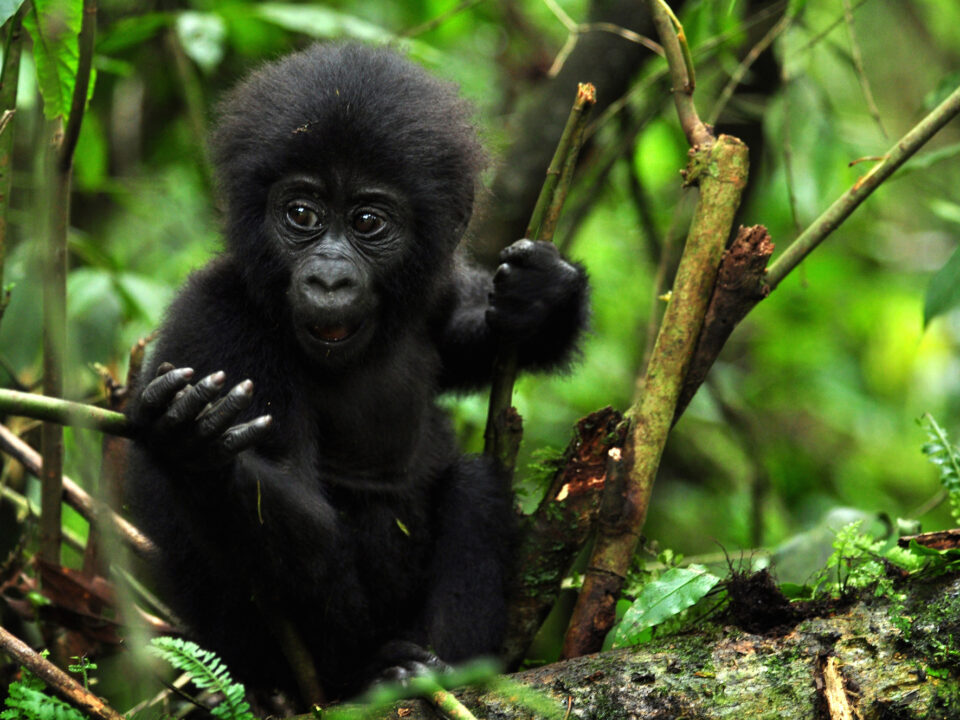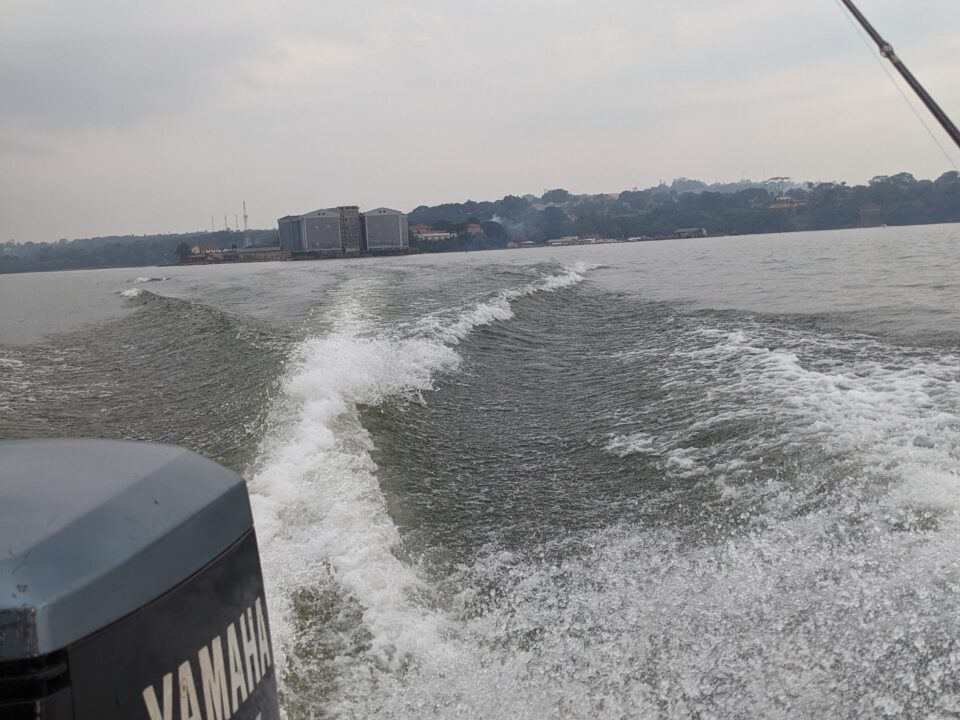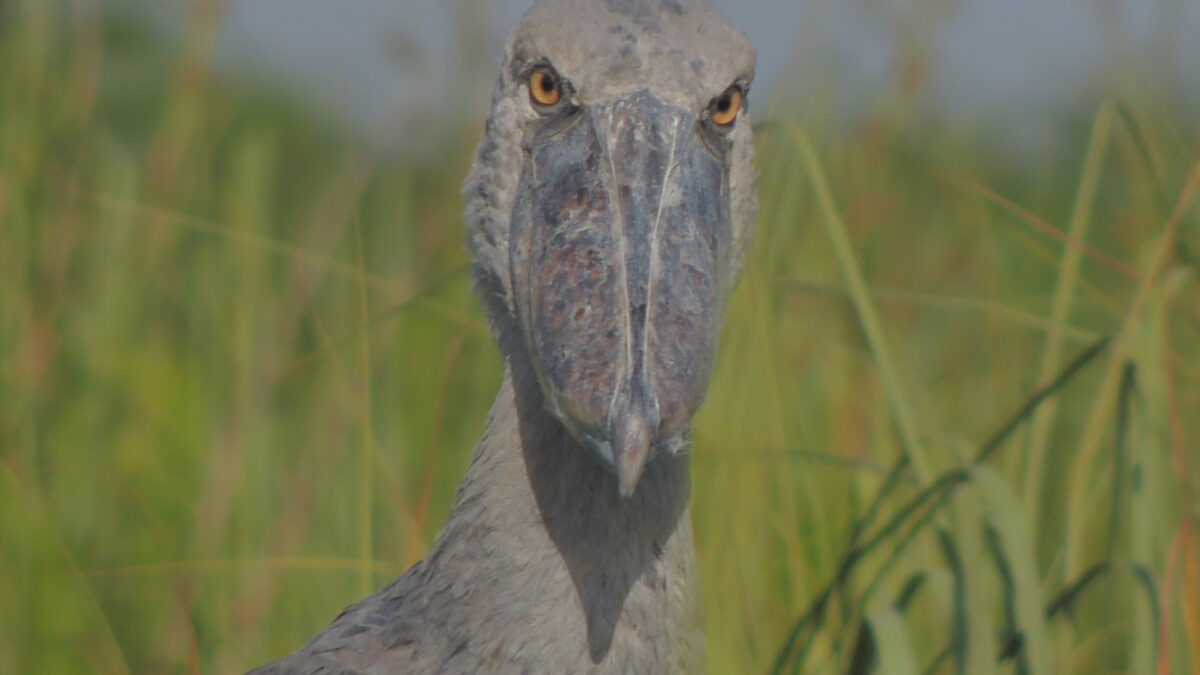
Birdwatching in Mabamba swamp
Mabamba swamp is a vast wetland located near Entebbe town and Kampala city Kasanje sub-county, along the shores of Lake Victoria. It is a top tourist attraction in Entebbe, known for its stunning bird species, including the highly sought-after Shoebill stork.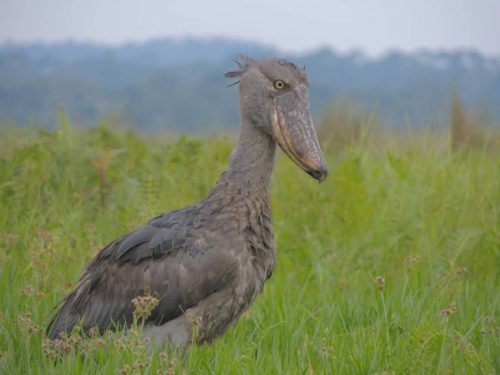
The Mabamba Swamp in Uganda is a Ramsar Site and an Important Bird Area (IBA) recognized for its unique and rare bird species such as the Papyrus Yellow Warbler, Shoebill Stork (Balaeniceps rex), Blue Swallow, and Sitatunga (swamp antelope), among others.
The Ramsar Convention on wetlands is an intergovernmental treaty that champions the conservation, wise use, and safeguarding of wetlands and their treasures.
The Mabamba Swamp is now a popular destination for birdwatchers due to its location close to the Entebbe International Airport. 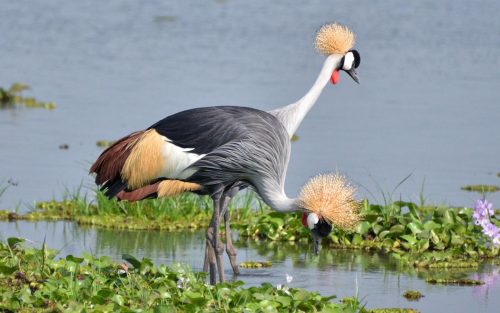
Other Birds Around Mabamba
It is home to many species of birds, including the threatened Papyrus Gonolek, Blue Swallow, Pallid Harrier, and White-Winged Warbler. In addition, the swamp is a sanctuary for several other bird species, such as Yellow-billed Ducks, Yellow-Billed Stork, White-winged Black Terns, White-faced Whistling-duck, Whiskered Terns, Water Thicknee, Swamp Flycatcher, Squacco heron, Slender-billed Gull, Saddle-billed Stork, Gmy Geese, Purple Heron, Black Headed Gonolek, Banded Martin, Ashy Flycatcher, Angola Swallows, Afrikan Jakana, African water rail, African Pygmy Goose, African Purple Swamp-hen, African Pigmy Goose, African Pied Wagtail, African Marsh Harrier, African Jacana, and African common Moorhen.
The Mabamba Swamp is an ideal starting point for tourists interested in a long Uganda safari tour and it is one of Uganda’s best places for birdwatching.
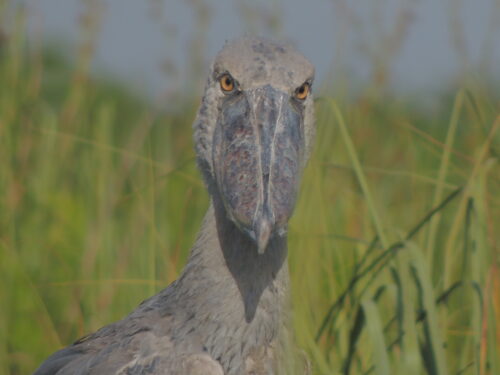
Birding safaris in the Mabamba swamp are arranged daily and take about 4 hours depending on the availability of birds however, full-day birding can also be arranged on request of the traveler. The best period for birding in Mabamba swamp is between September and March providing a lot of activities within the wetland as migratory birds arrive from Europe.
Booking a tour of Mabamba Swamp
You must book a tour of the Mabamba swamp at least a day ahead to ensure smooth planning.
To make sure everything is taken care of, you can arrange for a tour operator like Outback Adventure Safaris to pick you up very early in the morning from your hotel or residence. Don’t leave it to chance – book your tour now!
How to access Mabamba Swamp
A convenient and enjoyable way to get to the swamp from Entebbe town is by taking a speed boat ride through Lake Victoria. This route is more adventurous and offers great views of the beautiful Lake Victoria, as well as Entebbe town and the airport. It takes about 45 to 50 minutes by speed boat to reach the starting point in Mabamba.
Access to Mabamba Swamp By Boat
Speedboats can be rented from tour operators in Entebbe town, such as Outback Adventure Safaris. These boats are in excellent condition, comfortable, and equipped with life jackets. However, they are too large to navigate through the papyrus swamps. To explore the Mabamba wetland, you will need to switch to smaller canoes that are specifically designed to navigate through the papyrus swamps.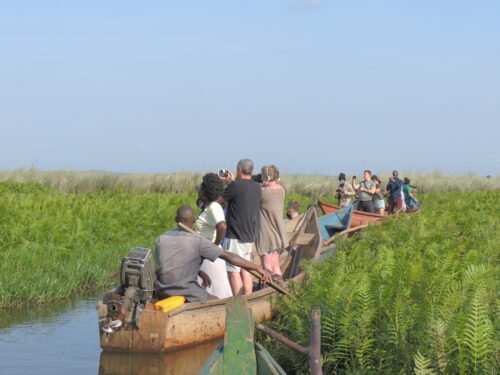
Once you reach the starting point, you will find a birding guide and a skipper waiting to accompany you into the wetland for bird watching. Please note that each canoe can only accommodate a maximum of three birders, excluding the guide and skipper.
Local boat owners and birding guides operate in Mabamba Swamp. Booking a bird-watching trip with them supports the community and helps preserve the wetland’s wildlife. People are less likely to destroy something that benefits them.
How to move within Mabamba
As soon as the boat starts moving into the reeds, pay attention to both sides of the narrow pathways and in the air. Your guide and skipper will help you get close to the birds by navigating through the papyrus and lily pads.
After rowing for a few minutes, the narrow papyrus reeds open up to reveal flat grassy swamps. Have your binoculars and camera ready.
Be prepared for the abundant birdlife here. Look out for bee-eaters, kingfishers, and other birds. Don’t miss the butterflies and lotus flowers. The Shoebills are best seen in the morning. Storks are easy to photograph.
This is because they stay still for long periods as they observe the movement of fish, frogs, and other prey before making a lightning strike. They support themselves by standing on floating reeds.
The chances of seeing the Shoebills in Mabamba are very high. One of the reasons for the high success rate is the great cooperation and teamwork among the Birding guides.
When there are several visitors at the bay, the guides spread out and head to different sections of the swamp. They are in constant communication and any who spots the Shoebills first alerts the others about their presence.
All the boats gather at a specific location for birders to spot the birds quickly. Once you locate the Shoebill and have seen enough of the birds, you will head back to the lake where a larger boat awaits to take you back to your hotel. As you leave the Mabamba wetland, you might also be able to spot more Shoebills along the swampy shores of the lake or nearby lagoons.
Other things to do while visiting the Mabamba swamp
Butterflies watching
Whereas birdwatching is the main highlight of a visit to the Mabamba swamp, the countless butterfly species also catch the eye. The Mabamba swamp has over 200 species of butterflies. The most common species are the Bicyclus sebetus, Acraea consanquine, Acraea aganice, Achaea aurivilli, and Abisaraneavei.
Sport fishing
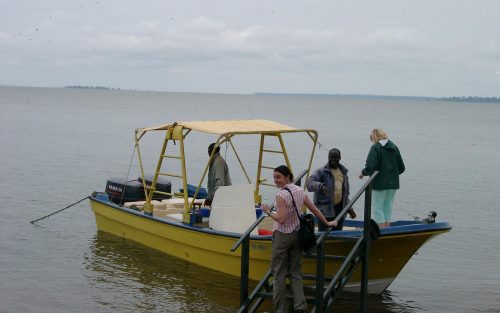 Fishing has always been the primary economic activity in Mabamba, even before tourism gained popularity.
Fishing has always been the primary economic activity in Mabamba, even before tourism gained popularity.
It remains the most dominant activity with the most commonly caught species being Tilapia, mudfish, lungfish, and Nile Perch.
In the area, there are several fishermen whom you can either observe from a distance or join them.
If you would like to join them, you can bring your equipment, hire from us, or create your own using locally-made hooks and rods.
Spotting the Sitatunga antelope
The Mabamba swamp is an important sanctuary for the Sitatunga. It is possible to encounter these elusive antelopes while on a birdwatching tour in the vast swamp. However, their numbers have dwindled due to uncontrolled poaching.
The poachers capture and expose the animals by setting fire to their hiding places, the marshes. The government and wildlife conservationists are making efforts to protect them through community sensitization.
Canoeing at Mabamba
If you want to explore more of the birds, go fishing, and tour the nearby islands of Lake Victoria, you can arrange for longer periods of canoeing. 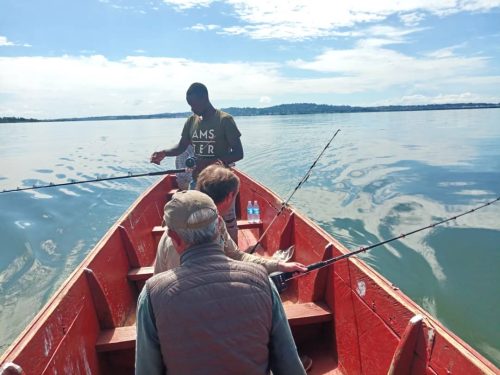 However, it is crucial to board the canoe only with life jackets. In case you don’t have one, choose a boat that can provide you with a life jacket.
However, it is crucial to board the canoe only with life jackets. In case you don’t have one, choose a boat that can provide you with a life jacket.
Village walks and visiting Craft Shops
Take the opportunity to mingle with the locals and gain insights into their way of life during the village walks. It is worth noting that most of the people residing near the swamp practice subsistence farming. You must visit one or two of the craft shops to admire the expertly crafted bags, mats, baskets, and huts.
Most of these items are made with reeds from the swamp. The swamp also provides herbs and building materials for local huts.
Conservation activities and the future of the Mabamba wetland
Every year, hundreds of tourists visit Uganda with the primary goal of catching a glimpse of the Shoebill Stork. This increased interest has brought about greater awareness regarding the decreasing numbers of these birds and the necessity for their protection.
It has highlighted the need to safeguard not only their habitat in the Mabamba swamp but also in other parts of Uganda where they can be found.
The Mabamba swamp is home to over 200 bird species, including the rare Shoebill stork and Sitatunga antelope.
While swamp antelopes are threatened by poaching, the Shoebill Stork is facing habitat loss as humans continue to drain the wetland for infrastructure.
Sensitisation Of Fishermen
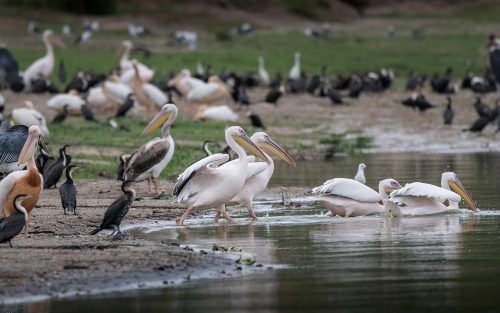
It’s important to note that a lot of Shoebills in the Mabamba swamp were once lost to fishermen because Fishermen used to believe that if they encountered a Shoebill stork while fishing, it would bring them bad luck and they’d have a poor catch.
Some individuals used to steal eggs from the Shoebill birds and sell them on the black market. However, since the place was designated as a Ramsar site, the birds are now better protected.
The government and wildlife conservation agencies are educating fishermen and communities near the swamp about the significance of the wetland and its wildlife to the ecosystem.
Through this sensitization, the community and fishermen have realized the great benefit of the swamp and the creatures therein. The fishermen benefit greatly by renting out their boats to tourists.
Some fishermen in the area have been trained as birding guides due to their experience. The economic benefits of tourism have made Shoebills highly respected and worth protecting.


